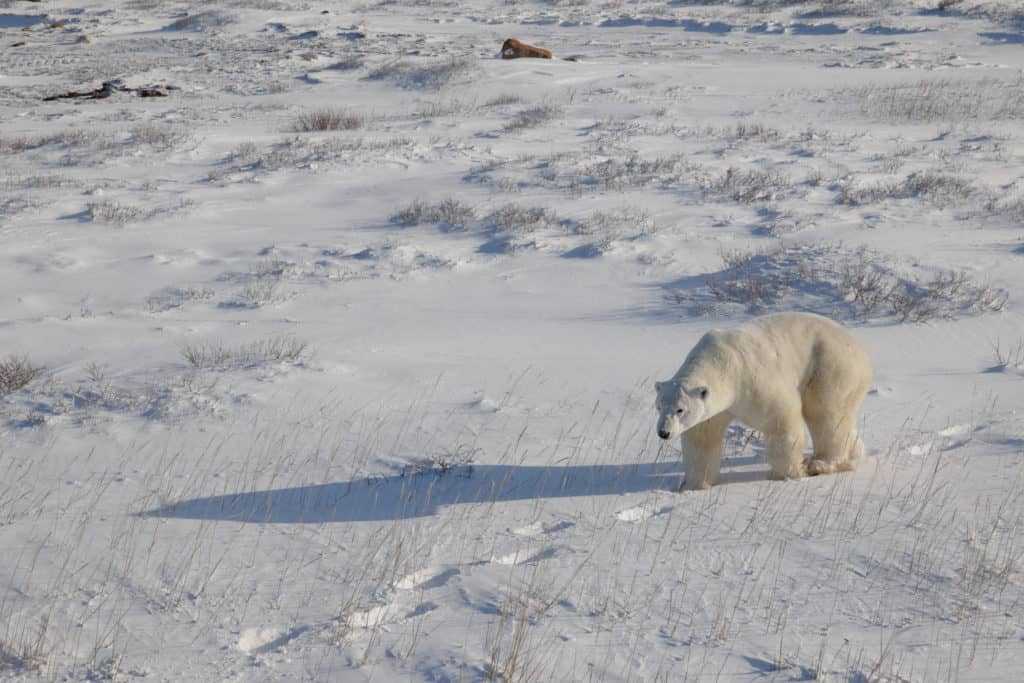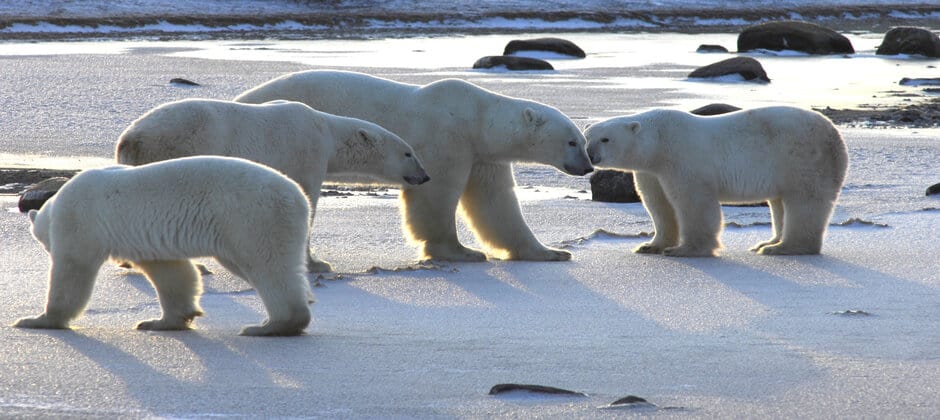Share this article
Subadult polar bears no longer main culprits in human conflicts
Increasing periods of ice-free water on Hudson Bay continue to cause more conflicts between humans and polar bears in northern Manitoba, researchers found, but the main culprits don’t seem to be subadults as they were in the past.
A previous study by Andrew Derocher and others had compared conflict patterns from 1970 to 2004, to sea ice dynamics and other trends in the area. They found that increased ice-free time in Hudson Bay was related to more conflicts between humans and bears in Churchill, Manitoba.
Sarah Heemskerk, the lead author of a study published recently in Global Ecology and Conservation, and her co-authors wanted to see if this trend had continued since 2004, especially since other factors had come into play during this time. For example, a dump that had previously attracted bears had been closed in outside of town in 2005.
They looked at the records of conflicts from 1970 to 2018. Overall, they mostly confirmed the results of the earlier study that found that less sea ice was related to more conflicts.

Subadults were less responsible, proportionately, for conflicts than they were in the late 20th century.
Credit: A. Derocher, Univ. Alberta
But in the new study, researchers uncovered a different finding from previous research. While the earlier study found that subadults were responsible for most of the problems, the recent research found that from 2002 to 2018, the numbers of subadults involved in conflicts were similar to the other age groups.
Heemskerk, who was an undergraduate student at the University of Alberta at the time, isn’t sure exactly why the number of conflicts dropped for subadults, especially since the age group’s behavior doesn’t seem to be changing. But it could be due to the changing demographics of the population overall — less subadults may be surviving in more recent years than in the past.
The dump closing outside of the city, they found, also resulted in a temporary increase in conflicts.
But overall, the researchers didn’t see many easily identifiable trends, other than that conflicts were heavier in years when bears were more abundant in the area in general. They are still seeing high levels of conflicts, but the levels aren’t increasing like they were in the years leading up to the 21st century.
Header Image: Polar bear conflict is related to less seasonal ice in northeastern Manitoba. Credit: A. Derocher, Univ. Alberta.








